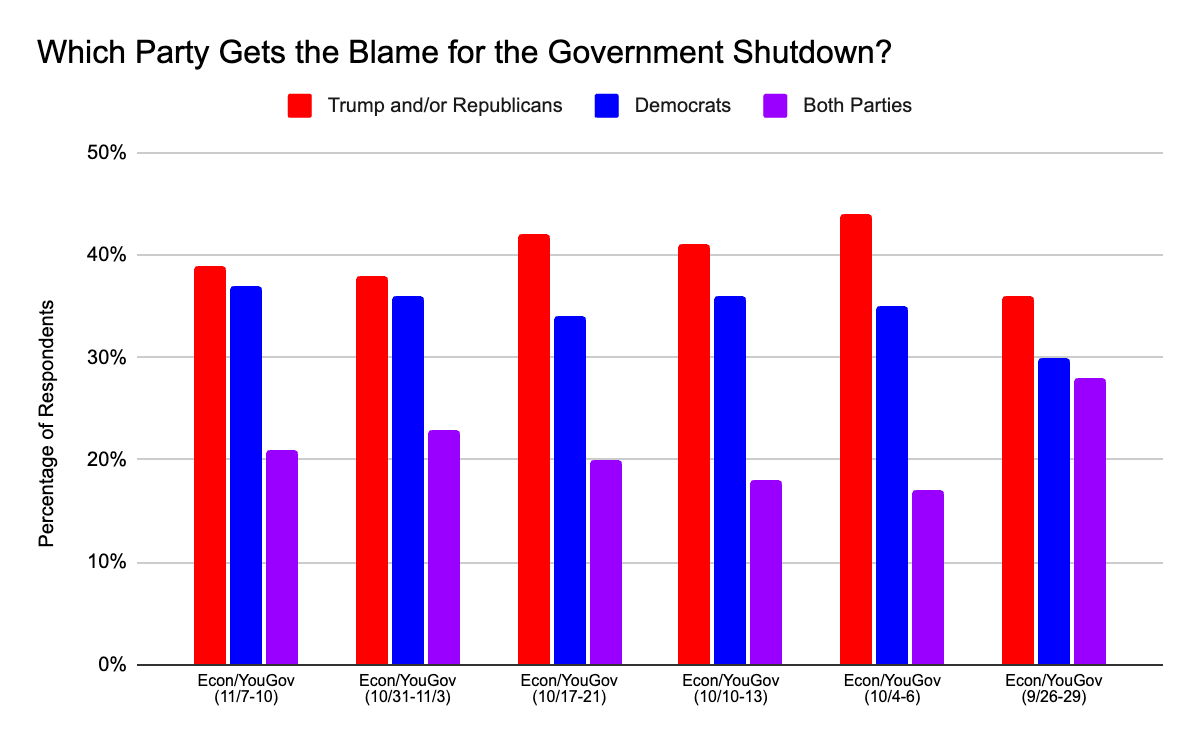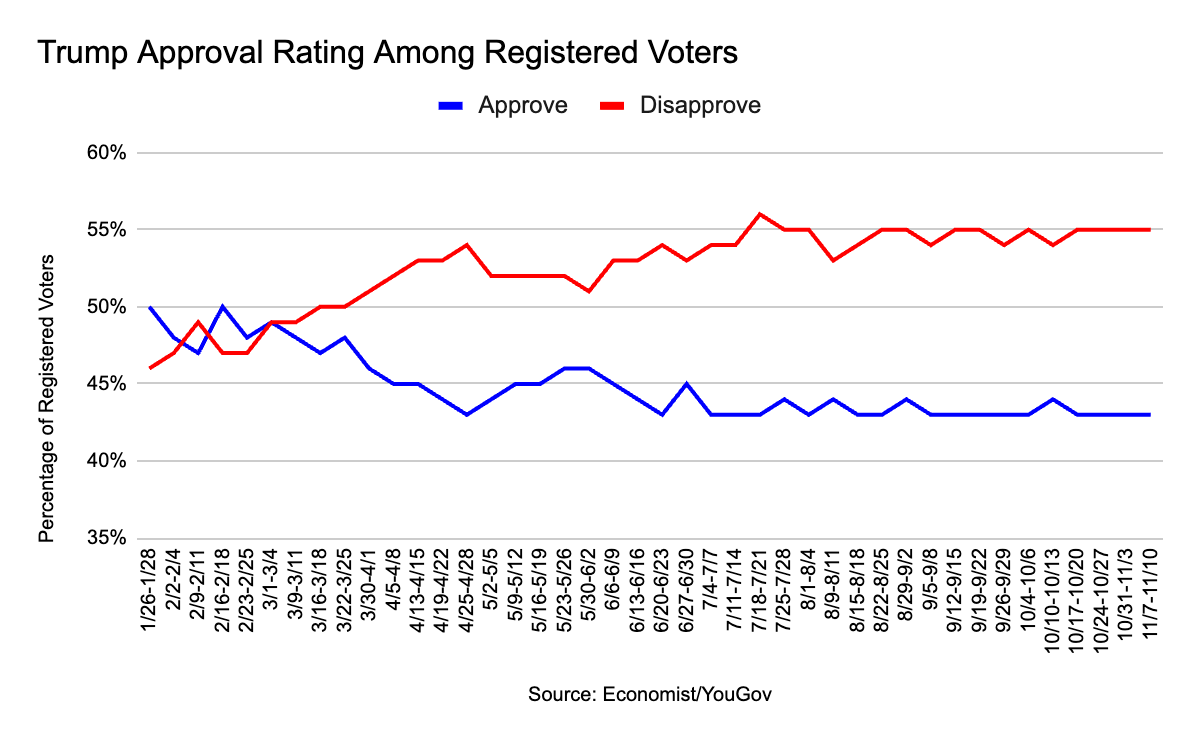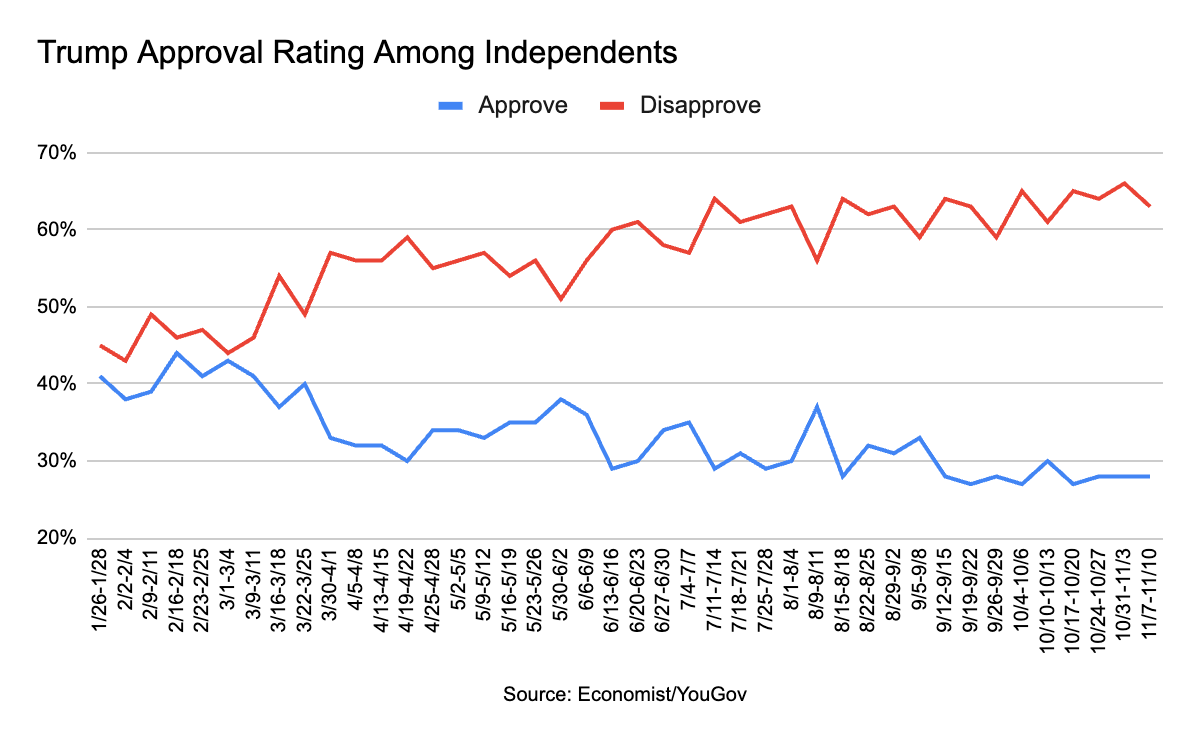The Shutdown May End Just in Time for Democrats
Economist/YouGov survey began to show shifts on shutdown blame
As you probably know, the Senate passed a bill on Monday evening to end the shutdown. The House is likely to vote on that bill on Wednesday. That’s not what this post is about. We’re looking at the politics around the shutdown and some other recent polling data.
One of the fascinating aspects of the government shutdown has been watching the shift in who voters blame. Every poll I’ve seen places more blame on Republicans and Trump than Democrats. That has been the consistent theme. However, not every pollster has regularly tracked voter sentiment on blame. The only pollster I’ve seen that has is the weekly survey conducted by The Economist and YouGov.
This particular survey has tracked voter sentiment on the shutdown since the end of September, just before it started. The first survey released after the shutdown began showed that 44 percent of voters assigned blame to Republicans in Congress while 35 percent assigned blame to Democrats in Congress.1 The share of voters blaming both parties equally was 17 percent. The blame assigned to Republicans peaked in this poll and slowly began to fall. The share of blame that fell on Democrats slightly ticked up.
The Economist and YouGov released their latest weekly survey today. The survey found that 39 percent of voters blame Republicans in Congress for the shutdown while 37 percent blame Democrats in Congress. This reflects the highest share of blame on Democrats. Another 21 percent blamed both parties. Considering the survey’s margin of error is 3.1 percent, we’re talking about a statistical tie. Last week’s survey showed 38 percent of the blame attributed to Republicans and 36 percent to Democrats.
Democrats have had an advantage over Republicans with independents,2 but that advantage began to narrow as the shutdown dragged on. The first survey after the shutdown began showed 41 percent blaming Republicans and 17 percent blaming Democrats—a 24-point advantage for Democrats. Today’s poll showed that the margin has gone down to 5 points. Independents have shifted their blame toward both parties equally, at 33 percent.
Didn’t Democrats just have a good election cycle? Yes, they did. No question. How can moods shift so much while Democrats had a good cycle? I mean, look, Trump’s approval rating with registered voters in this same poll is 43 percent. His disapproval is 55 percent. This appears to be his floor for approval and his ceiling for disapproval.
Meanwhile, Trump’s approval rating with independents is terrible. He’s not quite at his floor for his approval rating in the most recent survey, but he’s doing only slightly better. Only 28 percent of independents approve of Trump’s job performance while 63 percent disapprove. His low approval with independents is 27 percent. His high disapproval is 66 percent.
We also have to look at how voters and independents feel about the direction of the nation. Only 35 percent of voters believe the nation is on the right track while 58 percent believe it’s on the wrong track. This is even more pronounced among independents, with only 22 percent of them believing the country is on the right track. Compare that to the 67 percent who say the country is on the wrong track.
The important issues for voters are inflation/prices (24 percent), jobs and the economy (15 percent), and healthcare (11 percent). None of those are particularly good for Republicans right now. The issues that are Republicans’ strengths aren’t nearly as high on the minds of voters. Taxes and government spending are at 9 percent. Immigration is at 7 percent. Crime is at 2 percent. Although it’s still far too early to make pronouncements about the 2026 midterm election, Democrats have a 7-point lead over Republicans with voters—-46 percent to 39 percent. Among independents, Democrats lead 34 percent to Republicans’ 19 percent.
The shutdown seems to be a wash for Democrats. As I wrote weeks ago, this shutdown will not be top of mind when voters go to the polls in a year. It’ll be a distant memory. If Trump and Republicans haven’t figured out what to do about the economy and inflation, they’re in trouble. Whatever trouble they could be in, though, may have limited effect because of the recent spate of mid-decade redistricting. Granted, there may be some Republican seats that weren’t previously competitive that could be if Republicans don’t figure out what they’re doing.
This survey was conducted from October 4 to October 6. The shutdown was no longer a theoretical, unlike the late-September survey.
It’s really important to note that the independent numbers are a subset of adults, not registered voters.






